Types of diodes: Easy explanation for beginners (2025)
Diodes enable the flow of electric current in one direction while blocking it in the opposite direction. Various types of diodes are used in rectification, voltage regulation, signal modulation, and switching.
Different types of diodes are Zener, tunnel, varactor, Schottky, photodiode, PIN, laser, and LED. Although their basic operation remains the same, their properties change. Understanding the various types of diodes, their mechanisms, and their applications is essential for electronics enthusiasts and professionals alike.
In this article, we’ll explore different types of diodes, their mechanisms of operation, and their applications across diverse fields.
Diodes types
The diode is the two-terminal electronic component. It allows current to flow in one direction while blocking it in the opposite direction.
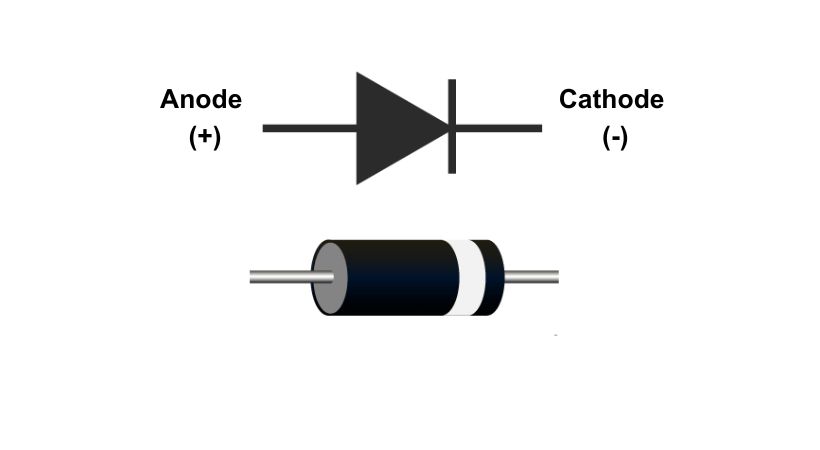
To learn more about diode see the article:
There are various types of diodes and each one has its characteristics and applications. Let’s discuss each one in detail.
1. Zener Diode
A Zener diode is a heavily doped diode that operates in the reverse direction. It plays a crucial role in electronic circuits and widely used diodes.
Clarence Melvin Zener was the first person who discovered this special diode that work in reverse bias so it was named after him zener diode.
The reverse bias is the condition in which the N-type diode is connected to the positive terminal of the voltage source and the P-type of diode is connected to the positive terminal voltage source.
Symbol
A symbolic representation of the zener diode is given below.
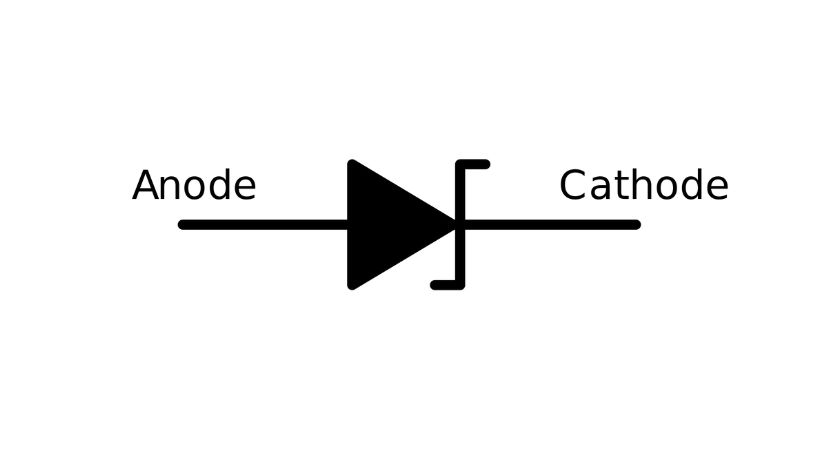
Working
The zener diode is heavily doped which means to make it conductive a high level of impurities is added. The depletion region is very thin due to doped impurities in the zener diode.
The depletion region acts as a type of barrier to stop the flow of electrons from the n-type and holes from the p-type.
The material that is doped to the diode increases the intensity of the electric field even for the small reverse voltage.
When no voltage is applied to the Zener diode, the electrons remain in the valance band of p-type and no current is flowing.
The small amount of external voltage can make the electron move from the valance band to the conduction band.
So when the diode is reverse-biased by the external voltage source the electron moves from the P-type to the N-type conduction band.
This way the diode starts conduction and the depletion region completely vanishes. The voltage at which the diode starts conduction and the depletion region becomes smaller and smaller, the voltage is called Zener Voltage.
Applications
The Zener diode has various applications. It can be used in voltage regulation, surge protection, overvoltage clamping, and noise reduction in electronic circuits.
- They are used to provide a stable reference voltage in electronic circuits, ensuring that a specific voltage level is maintained regardless of variations in the input voltage or load conditions.
- To protect sensitive electronic components from sudden voltage spikes, the Zener diode can be employed.
- Help in constant voltage. By connecting a Zener diode in parallel with a load, it helps maintain a constant voltage across the load.
- Zener diodes can be used to reduce noise or regulate voltage levels.
2. Tunnel diode
The tunnel diode is a heavily doped p-n junction diode. In this type of diode, the current decreases as the voltage increases.
It was invented by Leo Esaki in 1958. when the diode is heavily doped it will exhibit negative resistance.
Let’s see the symbol, working, and applications of tunnel diode.
Symbol
The circuit symbol of the tunnel diode is given below.
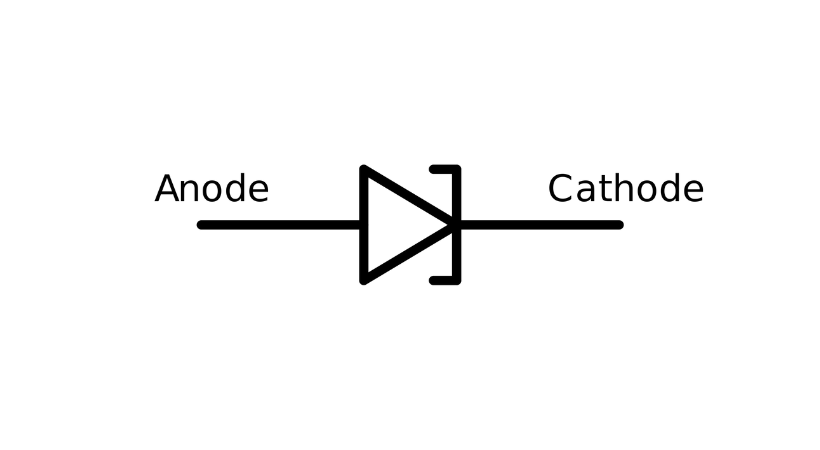
The n-type semiconductor acts as a cathode and the p-type semiconductor acts as an anode. So this means the cathode emits electrons and the anode attracts these electrons.
Working
The deletion region in the tunnel diode is very thin as it is heavily doped so the p-type semiconductor and n-type semiconductor are overlapped.
As in a normal pn junction diode when the applied voltage is less than the built-in depletion region voltage the current is not produced. The applied voltage should be greater than the depletion region voltage.
But in a tunnel diode, a small amount of voltage even if it is less than the depletion region voltage can produce current.
When the small amount of voltage that is less than the built-in voltage of the depletion region the small number of electrons will move from the n region to the p region. This will create a small amount of forward current.
By increasing the applied voltage the larger free electron in the n-type and holes in the p-type region are generated. This will increase the overlapping conduction band and valance band.
After further voltage increases, the overlapping is disturbed and this will cause the current to drop to zero. Now the tunnel diode starts acting like a normal pn junction diode.
By increasing voltage, the current decreases the negative resistance of the tunnel diode. The tunnel diode’s negative resistance region is its most crucial and frequently utilized feature.
Applications
The tunnel diode has a lot of applications due to its negative resistance features. Let’s discuss some of them.
- They are appropriate for use in parametric amplifiers, signal generators, and microwave oscillators due to their quick switching times and minimal phase noise.
- They are used in high-frequency, low-power applications where quick response times and minimal noise are essential, including microwave communication systems.
- The fast switching speed of tunnel diodes makes them useful in high-speed switching circuits.
3. Varactor diode
The varactor diode is a type of diode in which with the change in reverse voltage, the internal capacitance changes.
This type of diode always works in reverse bias. Different names are given to varactor diode, it can called Varicap or variable capacitance diode.
Let’s explain the working, symbol, and applications of varactor diodes.
Symbol
The circuit symbol of the varactor diode is given below.
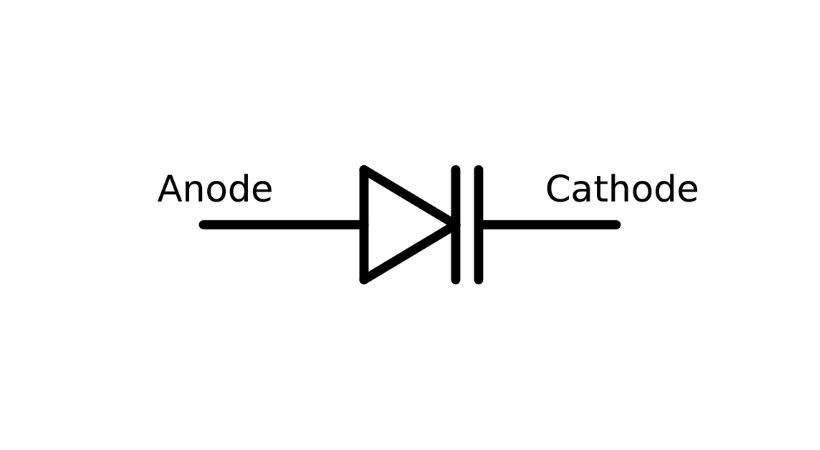
The two terminals represent the anode and cathode of the diode. The two parallel lines show the capacitor’s conductor plates and the gap is for the dielectric.
Working
The variation of the depletion region is the working principle of the varactor diode and in this way, the capacitance of the diode varies with the applied voltage.
The diode always works in reverse bise and store charges. When the reverse bias voltage is applied to the varactor diode, the depletion region expands. This expend in the depletion region will result in a decrease in the capacitance.
Conversely, when the reverse bias voltage decreases, the depletion region narrows down, and an increase in the capacitance of the diode occurs.
By varying the applied voltage, the capacitance of the varactor diode can be controlled, allowing it to function as a voltage-dependent variable capacitor.
Applications
Let’s talk about some useful applications of varactor diode.
- Varactor diodes are commonly used in VCOs to generate frequency-modulated signals.
- Voltage-controlled filters, such as voltage-controlled bandpass filters or voltage-controlled tunable filters, use varactor diodes.
4. Schottky diode
Schottky diodes are semiconductor devices that have a low forward voltage drop and fast switching characteristics.
They are constructed using a metal-semiconductor junction instead of a P-N junction found in standard diodes.
As we know in a PN junction diode, a p-type and n-type material are used but in a Schottky diode metals like aluminum or platinum are used instead of p-type material.
Symbol
The circuit symbol of the Schottky diode is represented as given below.
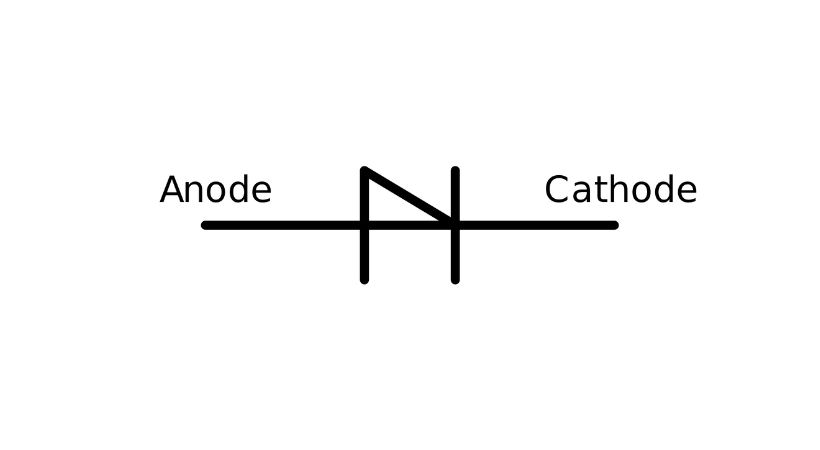
Working
The working principle of a Schottky diode is based on the rectifying properties of a metal-semiconductor junction, known as a Schottky barrier.
Unlike a P-N junction diode, which has a depletion region, a Schottky diode has no depletion region and is classified as a unipolar device.
When the Schottky diode is forward bias, means the positive terminal of the battery is connected to metal and the negative terminal of the battery to the n-type semiconductor.
When a forward bias voltage is applied across a Schottky diode, this creates a Schottky barrier at the junction, which prevents the flow of majority carriers from the semiconductor to the metal.
After further increasing the applied voltage the electrons gain energy and overcome the Schottky barrier and the current starts flowing.
The absence of the depletion region in Schottky diodes results in a lower forward voltage drop compared to P-N junction diodes.
This low forward voltage drop allows Schottky diodes to conduct current more efficiently and with less power loss.
Applications
The Schottky diode is used in various applications.
- They are appropriate for high-frequency rectification applications due to their quick switching times and low forward voltage drop.
- They are widely utilized in inverters, voltage regulators, and power supply.
- Used in frequency multipliers, demodulators, mixers, detectors, and modulators.
- Schottky diodes are very useful in radar and high-frequency communication systems.
5. Photodiode
A photodiode is a semiconductor device that converts light energy into an electrical current. The diode is light sensitive, when light falls on it, it converts light energy into current.
These are also known as photodetectors or photo sensors.
Symbol
The symbol of the photodiode is the same as the pn junction diode but the difference is that it contains arrows striking the diode. The arrow represents the light or photons.
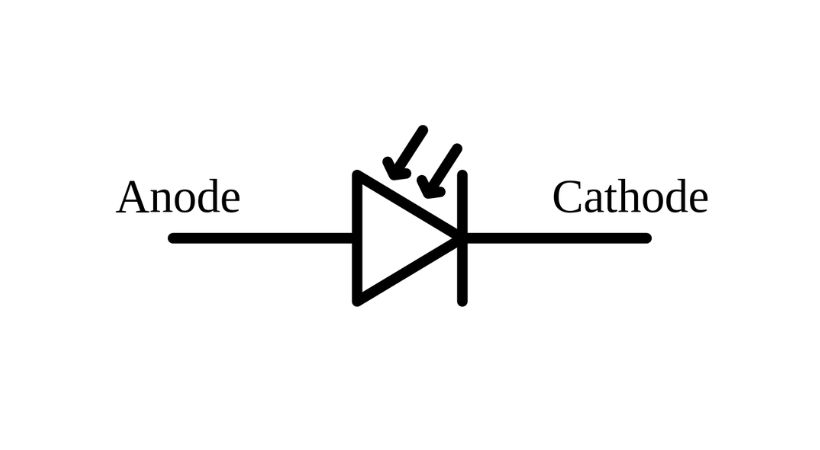
Working
The photoelectric effect is the basis for how photodiodes work. Electron-hole pairs are produced in a photodiode when photons, or light particles, contact with the semiconductor material.
A photocurrent is then produced when the diode’s electric field separates the electron-hole pairs. Photodiodes are typically constructed using a P-N junction.
In a P-N junction photodiode, photons with energy greater than the bandgap of the semiconductor material can excite electrons from the valence band to the conduction band, creating electron-hole pairs.
The electric field within the diode separates the electrons and holes, resulting in a photocurrent.
Applications
It is essential to discuss the important applications of photodiodes.
- Photodiodes are widely utilized in many different applications for light detection.
- Light meters, optical sensors, flame detectors, and ambient light detection in electronic devices like digital cameras and smartphones are among the applications of photodiodes.
- Imaging devices, including digital cameras and scanners, use photodiodes to take pictures.
- The photodiode is also used in remote sensing applications such as light detective and ranging systems (LiDR).
6. PIN diode
The PIN diode is the type of diode in which there is an undoped or intrinsic region between p-type and n-type. It consists of three layers: P-type, Intrinsic, and N-type.
Let’s talk about its symbol, working, and applications.
Symbol
The symbol for a PIN diode is similar to a standard diode symbol, with an additional I-shaped region between the P and N regions. The I-shaped region represents the intrinsic region.
The symbol of the PIN diode is given below.
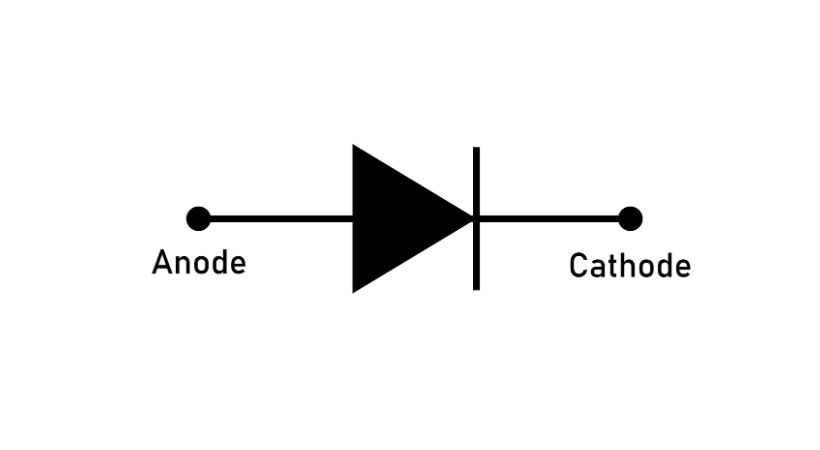
Working
The working principle of a PIN diode is based on the interaction between the depletion region and the intrinsic (I) region.
The P-type and N-type regions create the depletion region, which forms a barrier to the flow of current.
When no bias voltage is applied (reverse bias), the depletion region is wide, and it acts as an insulator.
When the diode is forward-biased, the depletion region narrows, allowing current to flow through the diode. In this state, the PIN diode behaves like a resistor.
The intrinsic region plays a critical role in this process by providing a low-resistance path for the current flow.
Applications
The applications of the PIN diode are as follows.
- PIN diode can be used in High-voltage rectifiers due to its larger intrinsic region.
- Used in optical communication receivers, sensor photodiodes, and light measuring devices, among other photodetection applications.
7. Laser diode
A laser diode is a semiconductor device that emits coherent light through the process of stimulated emission. These are very small and cheap.
Lasers we know, the laser diode is one of the smaller among them.
Symbol
The symbol for a laser diode is similar to a standard diode symbol, with the addition of two arrows pointing outward from the junction. The arrows indicate the emission of coherent light.

The symbol is given in the above diagram.
Working
Inside the laser diode, there are three main parts: the positive side (P-type), the negative side (N-type), and the active region in the middle.
When electricity is applied to the laser diode, it creates a flow of electrons from the negative side to the positive side.
As these electrons move through the active region, they release energy in the form of light particles called photons.
The active region is designed to make sure the light particles all have the same wavelength and travel in the same direction. This is what makes the light from a laser diode coherent and focused.
Additionally, the laser diode contains reflectors on both ends. While the other mirror is only slightly reflected, one is entirely reflective.
While the partially reflecting mirror lets some light out, the fully reflective mirror bounces light back and forth inside the diode. The laser beam that we see is this escaping light.
So, in simple terms, a laser diode works by using electricity to create a controlled flow of electrons that release light particles.
Applications
Let’s talk about the applications of laser diodes.
- In telecommunications, laser diodes are frequently employed for data transmission and reception.
- The laser diode is also used in laser printing. The laser beam is produced that is scanned across a rotating drum, creating an electrostatic image.
- Barcode scanners use laser diodes to read barcodes quickly and precisely.
8. LED
An LED, or Light-Emitting Diode, is a semiconductor device that emits light when an electric current passes through it. It is widely used in various applications.
Let’s discuss this type of diode in detail.
Symbol
The symbol of LED is given below. The symbol for an LED consists of a simple arrow pointing away from the diode.
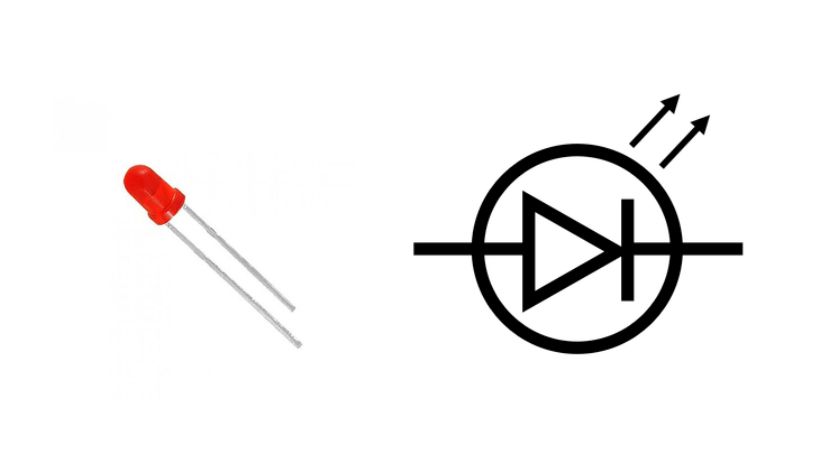
The arrow indicates the direction of light emission. The longer leg of the arrow represents the anode (positive terminal), and the shorter leg represents the cathode (negative terminal).
Working
Electroluminescence is the phenomenon that underlies the operation of an LED. The process by which an electric current activates a material and emits light is known as electroluminescence.
LEDs are typically made of semiconductors, such as gallium arsenide (GaAs) or gallium phosphide (GaP). The semiconductor material is doped with impurities to create two regions: the N-type region and the P-type region.
When the LED is forward biased, the electrons from the N-type and the holes from the P-type combined at the junction.
During this process of recombination, the energy levels of the electrons change, and they release energy in the form of photons (light particles). The energy level difference determines the color of light emitted by the LED.
Applications
Here are some of the applications of LED.
- LEDs are used in downlights, streetlights, and lightbulbs for both home and commercial use.
- Electronic displays frequently employ LEDs.
- They can also be used as indicators.
- LEDs are used for decorative and architectural lighting purposes.
Conclusion
The diode is an electronic component that allows the flow of current in one direction and blocks it in another direction.
It is frequently utilized for tasks like switching, voltage regulation, rectification, and signal modulation in a variety of electronic circuits.
There are various types of diodes each with specialized application. The Zener diode, light-emitting diode (LED), Schottky diode, PIN diode, and varactor are the types of diode.
The everyday life you can find a lot of diodes in your appliance. Television, smartphones, laptops, and other home appliances contain diodes.
These are just a few examples of how diodes are used in everyday life. Diodes play a crucial role in many electronic devices and systems.
All of this was about the different types of diodes; hopefully, it was useful.
Thank you and have a great life…
Other useful posts:
